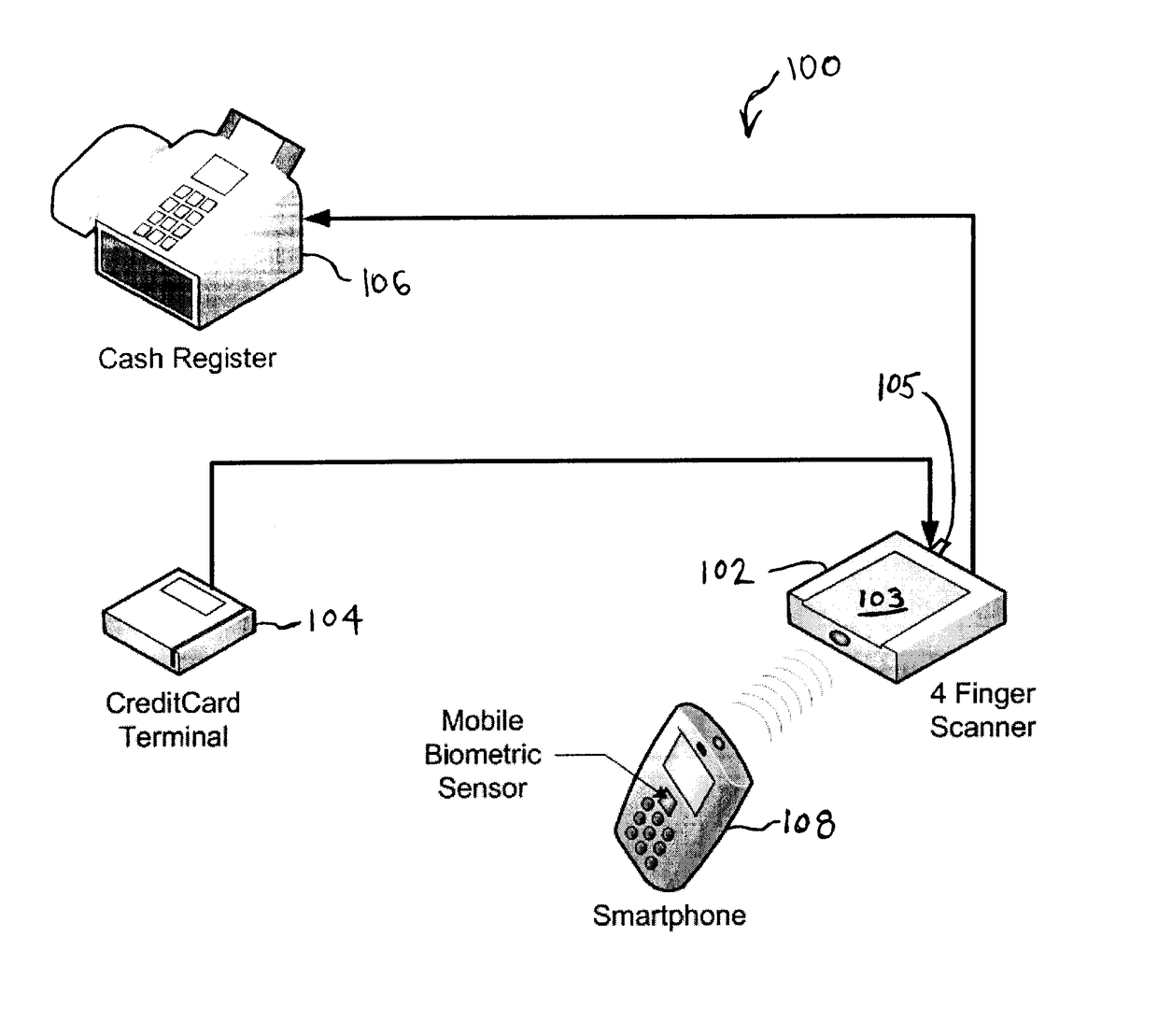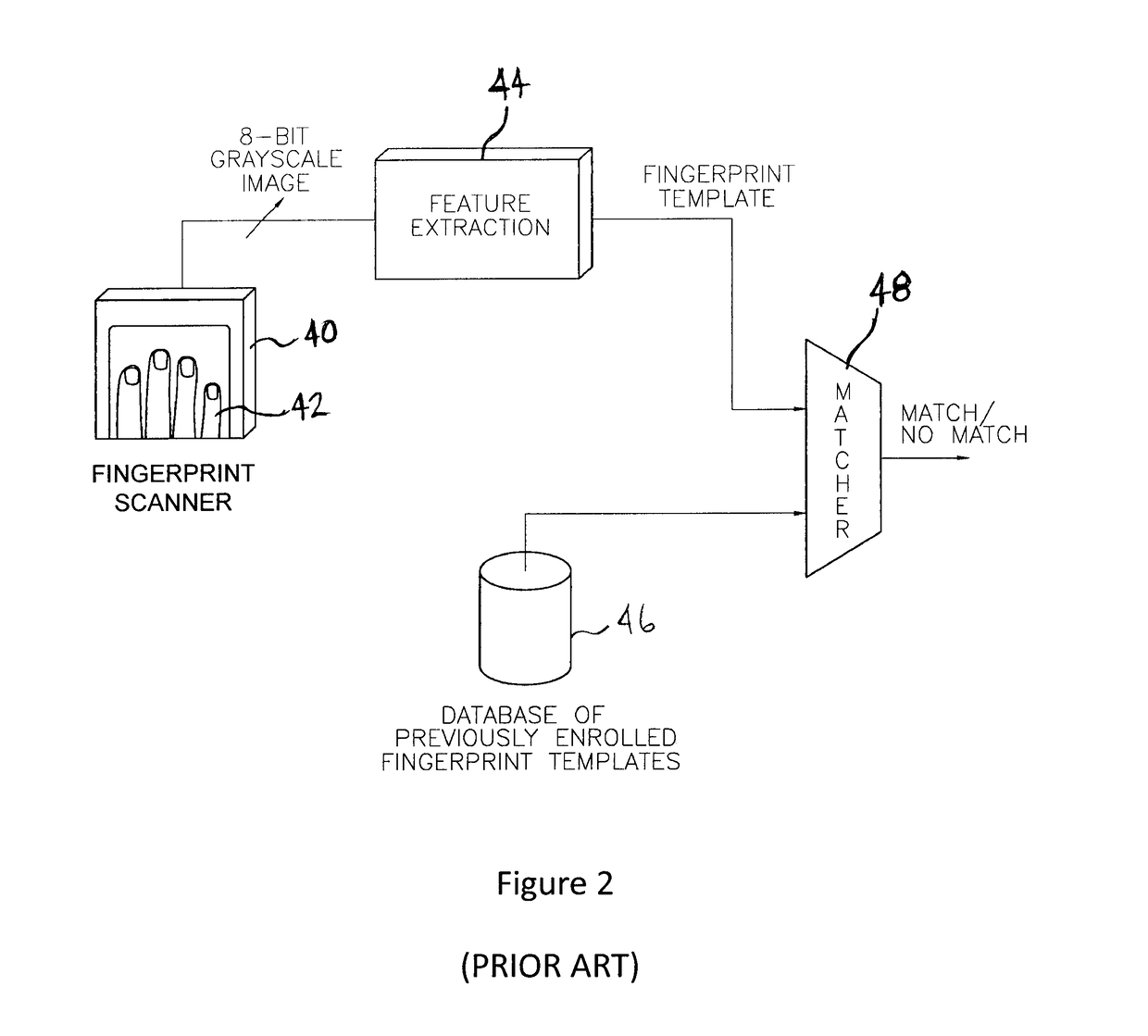Biometric computing system and method for e-commerce
a biometric and computing system technology, applied in the field of biometric computing system and method for e-commerce, can solve the problems of insufficient accuracy of identification information from a single fingerprint to facilitate an e-commerce application, no commercial biometric application has managed to create both compelling operational benefits and price/performance ratio,
- Summary
- Abstract
- Description
- Claims
- Application Information
AI Technical Summary
Benefits of technology
Problems solved by technology
Method used
Image
Examples
Embodiment Construction
[0029]The present invention may be described with reference to a commerce authorization system, and a method for authorizing a transaction.
[0030]Biometric identification systems operate on similar principles regardless of the type of biometric measurement (face, fingerprint, iris, other) or the particular vendor of the identification system. For illustrative purposes, the examples that follow will focus on the most widely used and widely accepted biometric, the fingerprint, with the understanding that the same concepts are easily extendable to other biometric measurements, and that other types of biometrics may be used in the present invention.
[0031]A block diagram of how a prior art fingerprint identification system operates is given in FIG. 2. A single finger or multiple fingers are imaged using a live-scan fingerprint capture device 40 to produce biometric data corresponding to the finger(s) 42. Generally, the biometric data is transmitted unencrypted to a local client workstatio...
PUM
 Login to View More
Login to View More Abstract
Description
Claims
Application Information
 Login to View More
Login to View More - R&D
- Intellectual Property
- Life Sciences
- Materials
- Tech Scout
- Unparalleled Data Quality
- Higher Quality Content
- 60% Fewer Hallucinations
Browse by: Latest US Patents, China's latest patents, Technical Efficacy Thesaurus, Application Domain, Technology Topic, Popular Technical Reports.
© 2025 PatSnap. All rights reserved.Legal|Privacy policy|Modern Slavery Act Transparency Statement|Sitemap|About US| Contact US: help@patsnap.com



